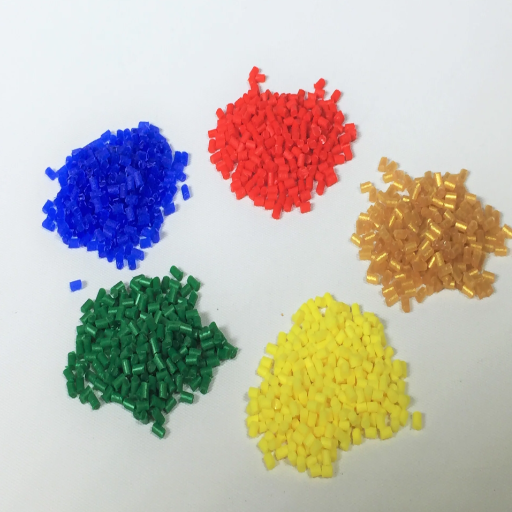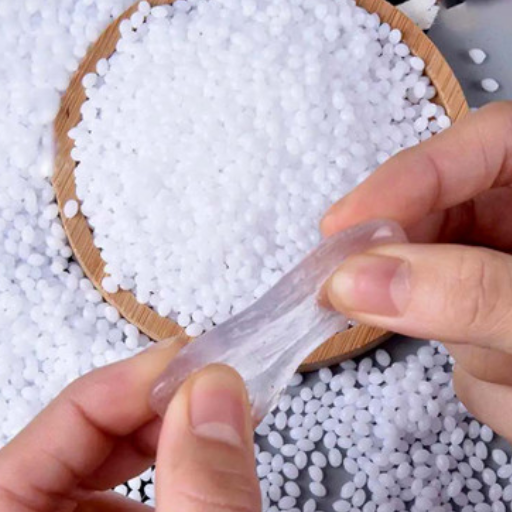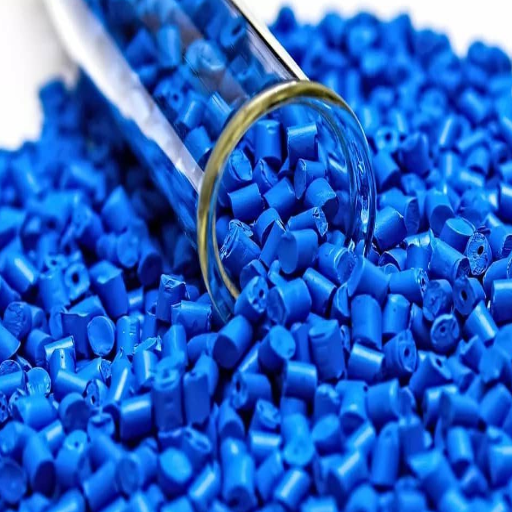Plastic resin pellets are also referred to as plastic resin beads and they serve as the basis or primary form of plastic for use in manufacturing processes. They are produced through polymerization which is a process that produces a polymer or copolymer. There are many different types of these beads such as Polyethylene, Polystyrene, and Polypropylene, each of them serving specific functions. The material is melted and molded into packaging products or automotive components which makes it a necessity in the plastic industry.
What Are Plastic Resin Pellets?
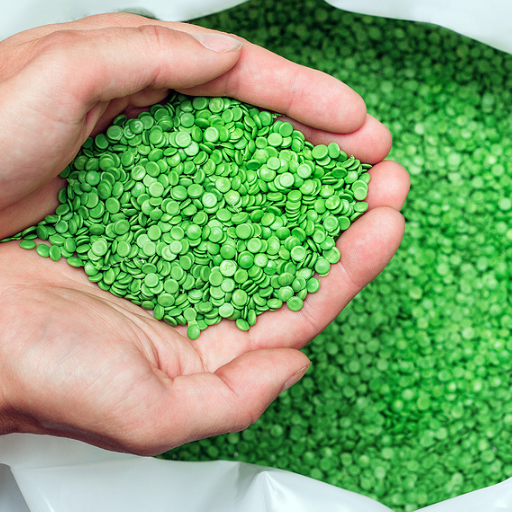
This guide will show you how plastic resin pellets are produced and how they are used across various industries. For manufacturers and environmentalists, some places offer a detailed overview of the backbone of the plastic industry so that all parties involved can gain useful practical knowledge.
Understanding Resin Pellets as Raw Material
Resin pellets are basically little pieces of plastic that serve as the raw material for many products. These are manufactured via polymerization and include types like polyethylene and polypropylene. Such materials are multifunctional; they can be melted and molded into everyday items such as car components or casing parts. In the polymer industry, resin pellets are very important because they offer a reliable and efficient method of producing strong plastic items.
The Role of Plastic Resin in Manufacturing
The manufacturing of various products starts with plastic resins as the central base material and is responsible for its contraction, durability, and cost efficiency. Raws such as natural gas and crude oil are the first step, where it get refined and polymerized into different types of resins. The most common resin types are polyethylene, which is later used for film packages and containers, polypropylene to produce automotive parts and textiles, and polystyrene for insulation and disposable food service products.
Resin’s properties differ in molecular structure and chemical composition. For instance, the tensile strength of polyethylene resin often varies between 10 to 40 MPa. Polypropylene resin has a lower tensile strength which is ideal for higher restrain force, typically ranging between 25-35 MPa. Other key technical parameters, such as MFI and density, determine the processability, strength, and flexibility. MFI for polyethylene is between 0.1 – 50 g/10 min while it is 1 – 100 g/10 min for increased grades of polypropylene.
To add on, plastics are selected with regard to their particular end-use needs. Bottles are made from rigid goods that skim HDPE which have a density of 0.091-0.96 g/cm³, while bags are made from more flexible LDPE material with a density of 0.91-0.93 g/cm³. Because of this, manufacturers are able to produce thin flexible packagings and strong automotive parts during one run.
To sum up, the modern world of manufacturing plastic metabolites is the highlight of modern-day plastic components creation because they are easily adjustable for a multitude of consumer needs with very specific technical requirements.
Key Types of Plastic Resins Used in Industry
There are important types of plastic resins that have indisputable usefulness, durability, and usage in industry, including the ones below:
- Polyethylene (PE): Polyethylene is used in a wide range of products because it has good elasticity, durability, and resistance to chemicals. It is widely used in packaging in the form of plastic bags, films, and containers.
- Polypropylene (PP): Marked for its strength and resistance to heat, polypropylene is used in a wide array of industries including automotive parts, textiles, and reusable plastic containers.
- Polyvinyl Chloride (PVC): Valued for its rigidity and custom moldability, PVC is used in construction materials like pipes, medical devices, and electrical insulations.
- Polystyrene (PS): Impact-resistant and lightweight, polystyrene is used in packaging, insulation boards, and disposable cutlery.
- Polyethylene Terephthalate (PET): Due to its transparency, clarity, and strength, PET is mostly used as a material for beverage bottles, food packaging, and synthetic fibers.
With each of these resins comes the particular need for industry which will ultimately allow for the development of products in all industries.
How Are Plastic Pellets Made?
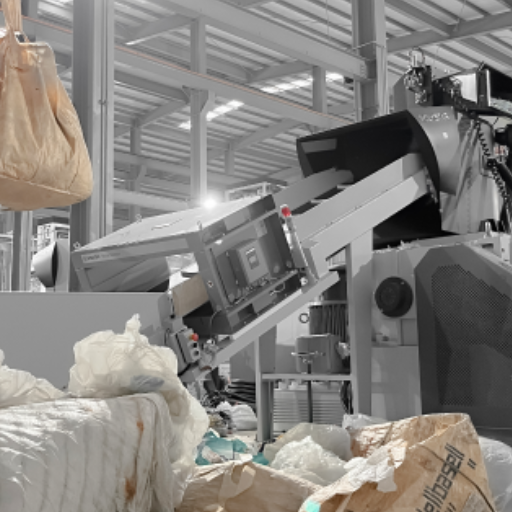
Different types of plastic are formed using a specific process known as polymerization or polycondensation which generally starts with specific ingredients that are sourced from natural gas or petroleum. The raw materials undergo a chemical reaction which results in a lengthy polymer chain. These polymers are melted, then extruded through a die which produces thin strands. The strands cool and solidify in water which gives them a uniform shape. These small pellets are then dried and packed for shipment. They are ready to be remolded into various product forms in factories.
The Polymer Production Process
From intricate industrial machines to reusable household items, polymers play an important role in many fabrics and textiles. Other items that are made from polymers are construction materials, electronic parts, cars, and even medical equipment. Polymers can be molded into many different shapes which attribute to their lightweight and durable nature.
Nonetheless, there have been worries about the impact of polymer generation and disposal on the environment. To mitigate this, industries are turning toward environmentally friendly approaches which include recycling and the creation of biodegradable polymers. Waste reduction is being achieved through mechanical and chemical recycling, as well as biobased polymers sourced from renewable materials becoming more widely used. Newer advancements in biopolymer chemistry and sophisticated recycling methods are helping to achieve a more circular economy in polymer production and a greener polymer lifecycle. These endeavors strike a balance between harnessing the benefits of polymers and reducing detrimental environmental effects.
From Extrusion to Injection Molding
Two of the main processes in polymer production are extrusion and injection molding. While extrusion involves forcing heated material through a die to form pipes or sheets, injection molding creates more intricate parts via pours of molten polymers into molds. Both methods are critical in accomplishing the production and supply of different goods in the industry’s ever-changing complex environment with virtually no waste created.
Importance of Density and Impact Resistance
The density and impact resistance parameters are very significant in the case of any polymers being manufactured since they directly affect the material’s performance and application. It is of particular importance for polymers because it dictates the weight, strength, and durability of the material. For example, high-density materials such as pipes and containers require high-load Poly Ethylene (HDPE), since they need strong and enduring materials, like pipes, that do not deform under heavy-duty stress. Typical polymer ranges in densities usually vary between 0.9 g/cm3 and 1.4 g/cm3, with Polypropylene and Polyvinyl Chloride standing at the ends.
Impact resistance is ultimately a measure of how much force or energy a material can take before succumbing to breakage. This is an important feature for material components that prioritize safety and durability like automotive parts, packaging materials, helmets, etc. A perfect example is Acrylonitrile Butadiene Styrene (ABS) and its extensive use for impact protective gear. There are several methods to measure impact resistance, some being, the Izod test and Charpy test. These methods usually provide results in J/m or ft-lb/in. Most common medium low-impact resistant materials range from 20-50 J/m whereas materials that are high-impact resistant like Polycarbonate will use anything above 100 J/m.
Knowing how to optimize these parameters allows critics to ensure that products are lightweight, sturdy, and catered to a specific environment or mechanical needs.
What Are the Applications of Plastic Resin Pellets?
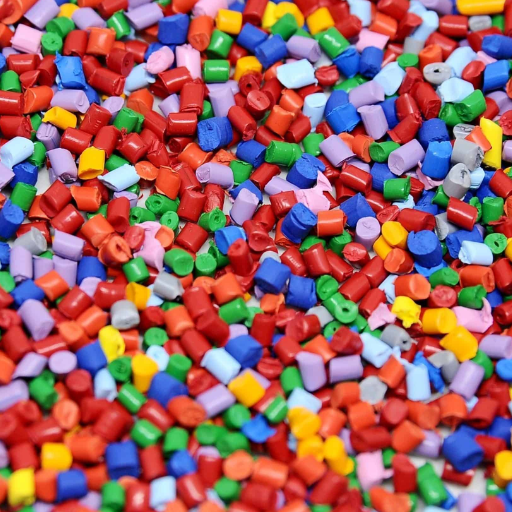
Plastic resin pellets are utilized by multiple industries and have applications in a wide variety of things. These pellets are considered raw materials for the production of consumer goods, automobiles, packaging products, construction parts, and even medical equipment. These plastic resin pellets excel in meeting the required standards of mold and design because they are flexible, durable, and light. These pellets are also used in the production of bottles, containers, electronic clasps, and even pipe fittings which integrate them into daily products and industrial uses.
Used in Automotive and Industrial Plastic
In my opinion, plastic materials used in the automotive and industrial sectors are crucial for improving performance and productivity in both fields. Plastics are utilized in parts of the vehicle such as dashboards, bumpers, and fuel tanks, making the car lightweight and improving fuel efficiency. Manufactured plastic products are also widely used in industrial applications such as pipelines, storage tanks, and machinery parts because they need to be strong and corrosion-resistant. They can easily meet tough demands while having the aspects of being cost-effective and versatile, making most industrial applications easier to manage.
Role in Food Packaging and Plastic Components
Plastics are fundamental materials in food containers because they are lightweight, robust, and sanitary, which increases the durability of the packaged products. Plastic materials protect food from moisture, oxygen, and contaminants which increases food quality. Common packaging plastics include PET (Polyethylene Terephthalate), HDPE (High-Density Polyethylene), and LDPE (Low-Density Polyethylene). For instance, the clarity and strength of PET, together with its easy recyclability, make it the most popular plastic for beverage bottles. Other key parameters include MVTR moisture vapor transmission rate, temperature resistance, and tensile strength which for PET ranges from 55–70 MPa. These parameters allow for the packaging to survive different conditions of storage and transport.
Significance in Plastic Production and Recycling
Modern manufacturing and packaging dramatically use plastics like PET, HDPE, and LDPE because of their perfect blend of durability, efficiency, and versatility. PET is a perfect example of this because it is highly valued for being highly recyclable, allowing it to be transformed into new strapping materials, bottles, and even fibers. PET’s low MVTR, thermal stability up to approximately 70°C along with its reliable tensile strength of 55-70 MPa, make it perfect for preservation and reusability.
HDPE is also well known for being robust and having chemical resistance which is why it is popular in piping systems, milk jugs, and detergent containers. HDPE supports a range of 25-40 MPa, while its heat resistance goes as far as 100°C in many other applications, which is why it is considered a long-lasting plastic for various demanding conditions. Its ability to be recyclable does not harm the environment either.
LDPE is frequently used in bags and film wraps because it is flexible, lightweight, and highly impact-resistant. LDPE’s tensile strength goes from 8 to 25 MPa while its heat tolerance allows it to withstand as much as 80°C. LDPE is a common example of energy-efficient recycling, transforming waste into new products while contributing to many eco-friendly initiatives.
Improving recycling rates has been attempted through better-sorting technologies, increasing the use of recyclable materials, and lowering contamination. These methods aim at reducing plastic waste while saving valuable resources, highlighting responsible practices that need to be integrated into the production and recycling of plastic. The implementation of such technical parameters and innovations enables balancing the needs of industries without compromising ecological sustainability.
How Do Thermoplastic Resins Differ?
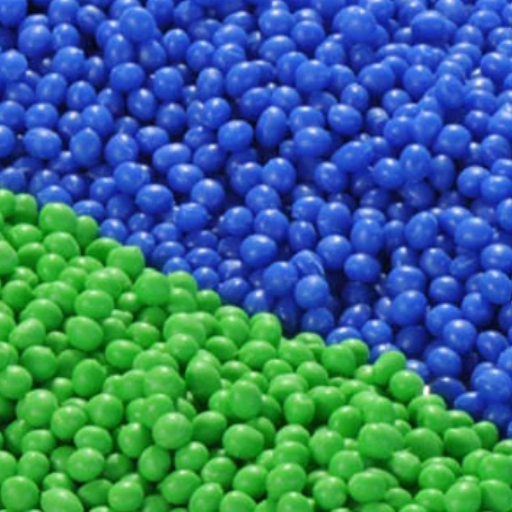
The way thermoplastic resins are used seems to stem from their unique ability to be melted and reshaped without losing any of their chemical properties. This versatility is what makes them so different from thermosetting plastics, which are unable to be reshaped once cured. Thermoplastic resin’s broad spectrum of differences across types comes from their molecular composition which affects flexibility, durability, heat resistance, and strength. The most popular of these types are Polyethylene, Polypropylene, and Polyvinyl chloride, or PVC. Each type is best suited for a specific purpose ranging from packaging to industrial parts, all depending on the needed performance. Due to being easily amenable to recycling, these resins are widely used across many environmentally friendly plastic products.
Comparing Polyethylene, Polypropylene, and Polystyrene
In my own research, it seems that low-density polyethylene is the most well-known out of the two, and is lauded for its flexibility and durable characteristics, which work best in packaging materials like plastic bags and films. On the other side of the spectrum, Polypropylene is more rigid but in return provides better heat resistance. This is why it is held in higher regard for use in food containers and automotive parts. Another versatile plastic is Polystyrene which can be both rigid and foamed, this flexibility makes it extremely popular for disposable cutlery as well as insulation. All of the plastics mentioned have unique characteristics and uses, and their applicability is mostly dependent on the demands of the specific product.
Exploring Low-Density Polyethylene and High-Density Polyethylene
Low-Density Polyethylene (LDPE) and High-Density Polyethylene (HDPE) are important variations of polyethylene. LDPE is popular because of its low weight, flexibility, and resistance to impacts, moisture, and chemicals. It is commonly used to produce plastic bags, film wrap, and squeeze bottles. LDPE has a softer structure and lower density because its polymer chains are extensively branched.
In comparison, HDPE is more commonly used in many industries because of its strength. It is used to make milk jugs, detergent bottles, piping resistant to corrosion, and even outdoor furniture. Both types of polyethylene are great contributors to sustainability when correctly managed as they are both highly recyclable. LDPE and HDPE differ because the branched structure of LDPE polymer chains makes it weaker and softer than HDPE which has a more rigid structure due to minimal branching of polymer chains.
Understanding Polycarbonate and Polyethylene Terephthalate
Having polycarbonate in an industry is a huge advantage. It is a hard, impact-resistant thermoplastic. It has impressive optical clarity as well. Its toughness combines well with its lightweight nature and makes it useful for electronic components, protective gear, and eyeglasses lenses. Furthermore, polycarbonate is useful in both industries and households because of its ability to resist high temperatures.
Polyethylene Terephthalate (PET) is best known for its strength-to-weight ratio, transparency, and ability to be recycled. It can most commonly be found in beverage bottles, food packaging, and synthetic fibers. PET is preferred because it is lightweight, recyclable, and ensures the safety of liquids. Both materials are important for contemporary manufacturing and play a pivotal role in the creation of advanced and useful products.
Why Is Recycling Plastic Pellets Important?
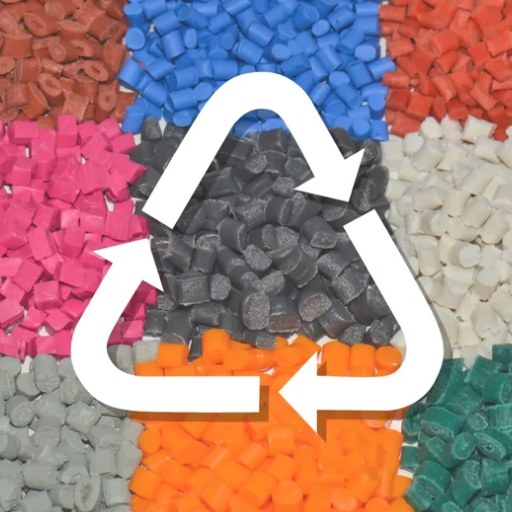
Recycling plastic pellets is important in lowering pollution and saving resources. Manufacturers who process and reuse plastic pellets can minimize the energy and raw materials needed to produce new plastics. It helps cut down the amount of plastic waste stored in landfills and dumped into oceans, reducing the risk to ecosystems and wildlife. Recycling plastic pellets also aids in creating a circular economy where used materials are reprocessed into new products which helps promote sustainability and proper resource usage.
Challenges of Recycling Plastic Resin
Recycling plastic resin has its hurdles which can affect efficiency and effectiveness. Contamination is perhaps the biggest issue, when plastics are mixed with pollutants or other materials, sorting becomes problematic. Unlike other types of plastics, different plastic resins have different melting points and chemical structures, so sorting technologies need to be advanced… to say the least. Another issue is the loss of quality that each recycled plastic suffers. Materials that have been previously used usually lack strength and durability, reducing the range in which they can be used. To add insult to injury, the demand for recycled plastic resin isn’t constant as the war for the cost of processing, market demand, and competition from cheap virgin plastics greatly hinder the economic benefit of recycling. Solving these issues needs better innovation, waste management systems, and partnerships between the government, industries, and the people.
Environmental Impact: Microplastics in the Marine Environment
Microplastics are plastic debris measuring under 5mm which is a result of personal care product microbeads, significant water body pollution, and degradation of plastic through washing. Microplastics pose perilous risks to the oceanic ecosystem and humanity. Microplastics are consumed by marine wildlife which incorporates them into their diet, further invading the food web and biodiversity. Not only do microplastics negatively impact biodiversity, but they also absorb pollutants in the water which makes the marine ecosystem more toxic. The constituents of microplastics in fish do raise health issues for humans consuming them, but further studies are mandated to understand the gravity of the situation. Consequently controlling this issue mandates the reduction of pollution, improving waste collection systems, and promoting the use of biodegradable plastics.
Benefits of Reusing and Recycling Plastic Materials
Plastic reuse and recycling have important environmental, economic, and societal advantages. For instance, recycling conserves useful materials like oil and natural gas, the main plastics manufacturing inputs. Recovering these reserves ensures that the environmentally damaging production of crude plastic is minimized. For instance, producing recycled plastics can cut energy consumption by nearly 88 percent when compared to turning out fresh new plastic components from base materials.
For one, the recycling and reuse of plastics also diminishes the waste produced which would otherwise go to burying grounds and oceans. Plastics, which are never biodegradable, can take centuries to get rid of themselves which inflicts severe damage to both land and water ecosystems. With further promotion of recycling practices, plastic crushing becomes more effortless for garbage dumps and landfills while plastic waste in seas can also be reduced significantly.
Another environmental impact of recycling is fewer plastic waste products incinerated means less GHG emissions released. Evidence suggests recycling one ton of plastic – an increasingly popular step throughout the globe – saves approximately two tons of CO2 emissions which goes a long way in combating climate change.
Lastly, extensive use and recycling of plastic generates additional manual work and bolsters economic prospects in both the recycling and manufacturing industries. There is economy-boosting potential in advanced works with materials of low quality because it is possible to invent new means of creating eco-friendly goods and stimulate the construction of waste II economy – when things are used, thrown away and used again in different forms.
For plastic recycling processes to be truly effective, several steps need to be taken like ensuring materials are separated correctly, contamination in recycling streams is kept at a minimum, and advanced recycling techniques are utilized. Chemical recycling, which degrades the plastic into its separable monomers, is one approach to more sustainably manage intricate waste streams, together with other strategies of sustainability.
References
Frequently Asked Questions (FAQ)
Q: What are plastic resin pellets and their primary uses?
A: Plastic resin pellets are small granules that serve as industrial raw materials for making various plastic items. They are widely used in processes like plastic injection molding and blow molding to create products such as plastic bottles, tubing, and other plastic containers.
Q: How are different types of plastic resin pellets identified?
A: Different plastic resin pellets are identified by plastic resin codes, which indicate the type of polymer used. Common codes include pp (polypropylene), hdpe (high-density polyethylene), ldpe (low-density polyethylene), and ps (polystyrene).
Q: What are the benefits of using pp resin in manufacturing?
A: PP resin is a widely used plastic due to its versatility, durability, and chemical resistance. It is ideal for making rigid plastic items like plastic packaging, automotive parts, and reusable containers.
Q: What is the significance of the diameter of a few millimeters in resin pellets?
A: The diameter of a few millimeters ensures that the resin pellets can be easily melted and molded during manufacturing processes like compression molding and plastic injection molding, allowing for the creation of new plastic components and parts.
Q: How does the process of blow molding utilize resin pellets?
A: In blow molding, resin pellets are melted and formed into a tube-like shape, which is then inflated into a mold to create hollow plastic parts such as bottles and other plastic containers.
Q: Why is it important to select the right resin for specific applications?
A: Selecting the right resin is crucial because different types of resin have unique properties that affect the strength, flexibility, and chemical resistance of the final product. Ensuring the correct resin is used can improve the performance and longevity of the plastic items produced.
Q: What role do plastic additives play in resin pellets?
A: Plastic additives are included in resin pellets to enhance properties such as color, flexibility, and UV resistance. These additives help improve the performance and appearance of the final plastic products.
Q: How does the production of resin pellets help in reducing marine debris?
A: By producing high-quality virgin pellets and promoting recycling of plastic items, the accumulation of marine debris can be reduced. This involves collecting resin pellets and reprocessing them into new plastic components, minimizing waste and environmental impact.
Q: What are some eco-friendly considerations in using resin pellets made in the USA?
A: Resin pellets made in the USA often follow strict environmental regulations, emphasizing sustainable practices such as recycling and the use of renewable resources. This helps in reducing the carbon footprint associated with manufacturing and supports the creation of eco-friendly plastic parts.
Q: How do resin pellets for injection molding differ from those used in other processes?
A: Resin pellets for injection molding are specifically designed to have a consistent size and quality to ensure smooth processing and uniformity in the final product. This is crucial for producing precise and detailed plastic parts efficiently.

